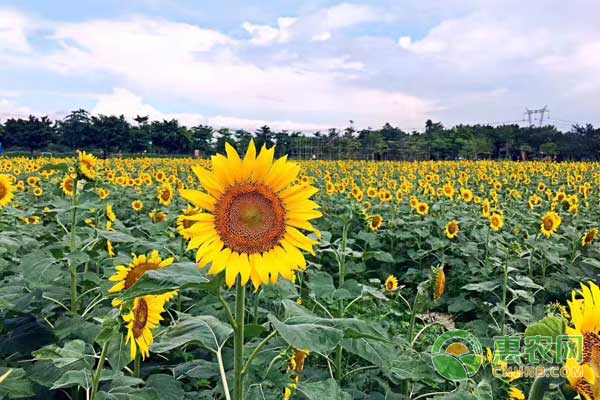Winter weather is cold and requires more fertilizer. Therefore, it is necessary to understand the characteristics of crop roots and growth, and according to its characteristics, fertilization can fully exert the role of fertilizer and save production costs. The following small series will introduce the secrets of winter crop roots and fertilizers.
First, roots and nutrition (key elements phosphorus, potassium, calcium, boron, manganese, molybdenum)
1. What is the role of crop roots?
(1) Fixation: Fix the crop in the soil to prevent lodging.
(2) Absorption: absorb nutrients and water from the soil.
(3) Synthetic action: The roots synthesize certain important substances and regulate the growth of the aerial parts.
(4) The role of transporting nutrients, storing nutrients, breeding and improving soil.

2. Which elements have the greatest relationship with root growth?
(1) Phosphorus: Drought-resistant and cold-resistant; promotes the absorption of calcium; promotes secondary root growth, and enhances the absorption rate of water and nutrients.
(2) Potassium: anti-high temperature, cold resistance, salt tolerance, disease resistance, lodging resistance, anti-premature aging; enhance soil enzyme activity, enhance root oxygen supply, increase root number, length, roots and root vigor. (KD-induced diseases: root rot; rice flax leaf spot, rice blast, red blight, sheath blight; corn stem blight, smut; wheat scab, powdery mildew; cotton red leaf stem Diseases and diseases such as tobacco mosaic disease)
(3) Calcium: promotes the stability of the root tip cell wall and cell membrane structure, and promotes the root system.
(4) Boron: promote the growth of the main root and the lateral root, increase the root volume, and also improve the nitrogen fixation capacity of the rhizobium. The boron deficiency is short and thick and brown.
(5) Manganese: The lateral root of manganese deficiency almost completely stopped growing, and the elongation effect of manganese on root cells was greater than that of division.
(6) Molybdenum: Increase root nutrient uptake and transport rate. It is involved in the nitrogen fixation of rhizobium and is an essential nutrient for rhizobium crops such as peanuts and soybeans.

3. How to add elements such as phosphorus, potassium, calcium, boron and molybdenum
In the early growth of roots, the supply of calcium, phosphorus and potassium mainly comes from the base fertilizer. As the demand for nutrients increases with the growth of crops, boron and molybdenum are mainly supplemented by leaves, because the mobility of boron and molybdenum in the soil is very poor.
4. When do crops add phosphorus, potassium, calcium, boron, molybdenum and other elements?
Different crops have different requirements for phosphorus, potassium, calcium, boron, molybdenum, etc. There are several application principles:
(1) Crops encountering adverse conditions such as drought, flood, frost, etc., can promote root growth, absorb more nutrients, and resist adverse environmental impacts.
(2) Transplanting after transplanting causes the root hair of the crop to be damaged to a certain extent, and the effective application can promote the growth of the root and better adapt to the new environment.
(3) Crops that need to be harvested many times, such as tomatoes, peppers, cucumbers, etc., in the later stages of harvest, nutrients need to be transported for longer distances, and no strong root support is not enough.
(4) Crops sensitive to soil-borne diseases, such as cotton and watermelon, are susceptible to soil-borne diseases.
Second, stem and nutrition (key elements potassium, calcium, sulfur, manganese)
1. What is the role of the stem?
Function: Stems are the main channel for the transport of substances in plants; they are the main channels for absorbing water and nutrients. The normal stems are grown on the ground, the lower part is connected to the roots, and the upper part supports the leaves, flowers and fruits. Therefore, the stem and the mechanical support are the main functions; the stems also have the function of storage and reproduction; the green stems can also be carried out. Photosynthesis.
2. Which elements have the greatest relationship with the growth of the leaves?
(1) Potassium: promotes the development of stem vascular bundles, thickens the stem wall, becomes smaller in the medullary cavity, and arranges the cells in the mechanical tissue neatly, which greatly enhances the lodging resistance. Potassium deficiency stems are weak and easy to fall.
(2) Calcium: promotes cell elongation and growth, and maintains structural stability of the cell wall and cell membrane. Calcium deficiency causes leaf coke in cabbage, cabbage and lettuce; umbilical rot in tomato, pepper, watermelon, etc.; apple bitter pox and water heart disease, acne spot, ring rot, fruit rust, peach fruit top softening, banana Longan litchi cracking fruit, pear tree black spot, black spot disease, kiwifruit early maturity and soft, chestnut storage period flesh black.
(3) Manganese: strengthens the mechanical strength of the stem and the stem is thick.
(4) Sulfur: Enhance the toughness of the stem, and the sulfur-deficient stem is weak and short, and it is easy to fall.

3. When does the crop supplement potassium, calcium, sulfur and manganese?
The best period for strong stalks is after transplanting and slowing down to the bud stage.
However, the principles of use are as follows: after transplanting the seedlings to the bud stage, the main period of stalk shaping of the solanaceous fruits, melons, grasses and other crops is also the key period for determining the amount of nutrient transport and yield. It can timely replenish all kinds of mineral nutrients needed for stalks, and lay a good foundation for later expansion of fruit.
The above are the key points for fertilization of winter crops and fertilization methods, and the contents are for reference. If you want to know more about agricultural technology, please pay attention to the Hui Nong School!
Industrial Hinges,Door Hinges,Heavy Duty Hinges,Industrial Door Hinges
Ningbo Hengchieh Locking Technology Co., Ltd. , https://www.yh-lock.com